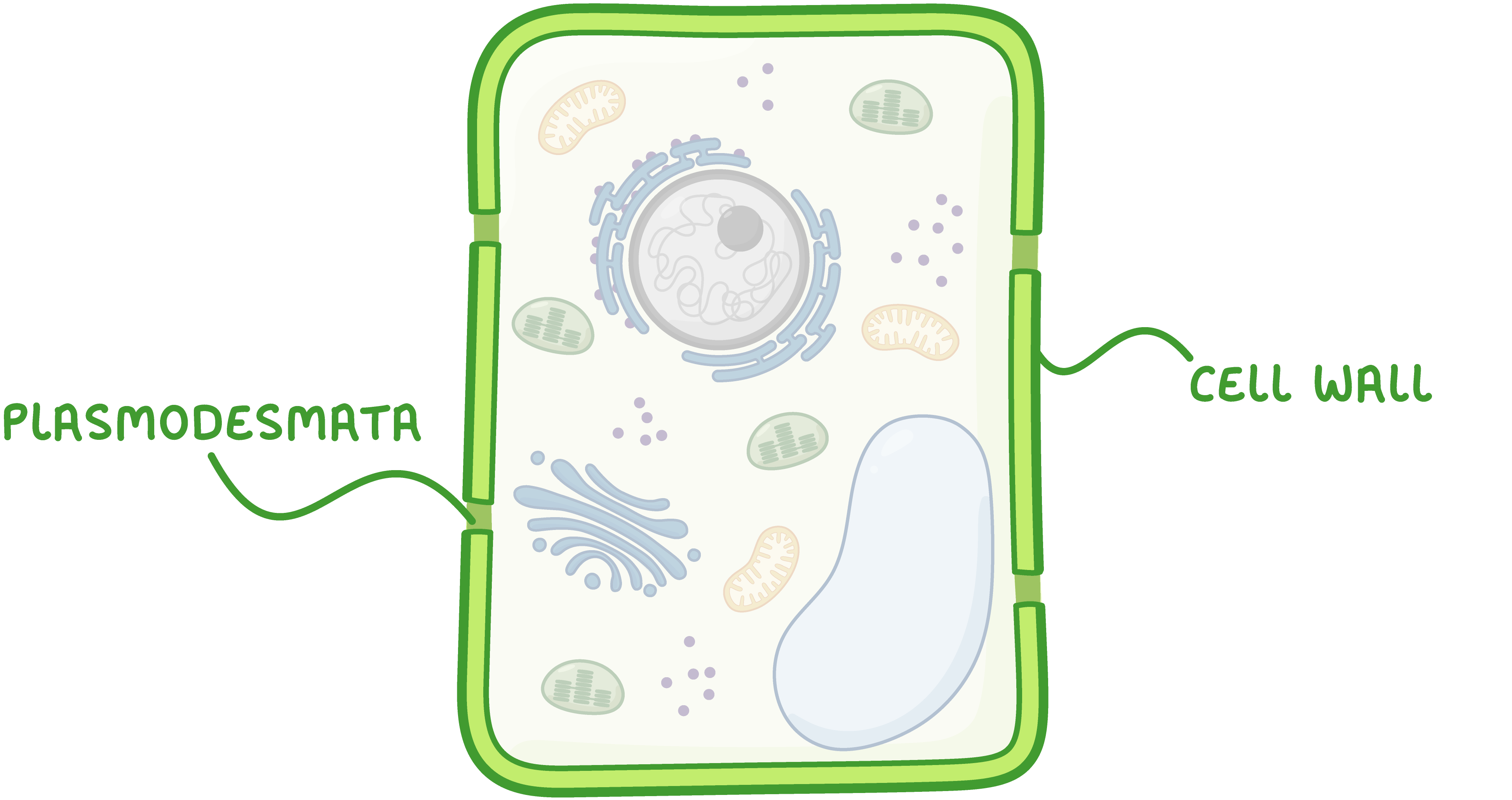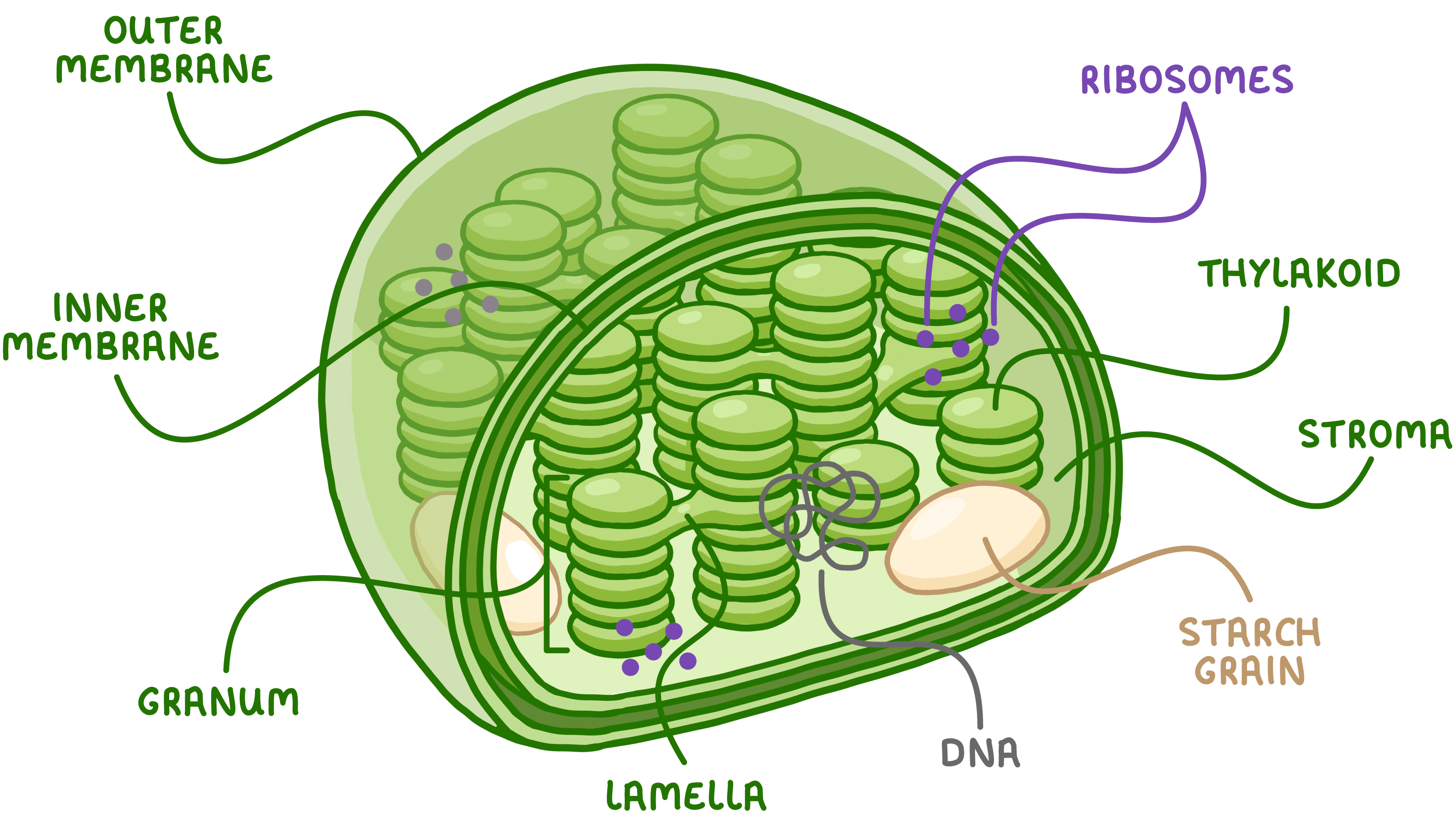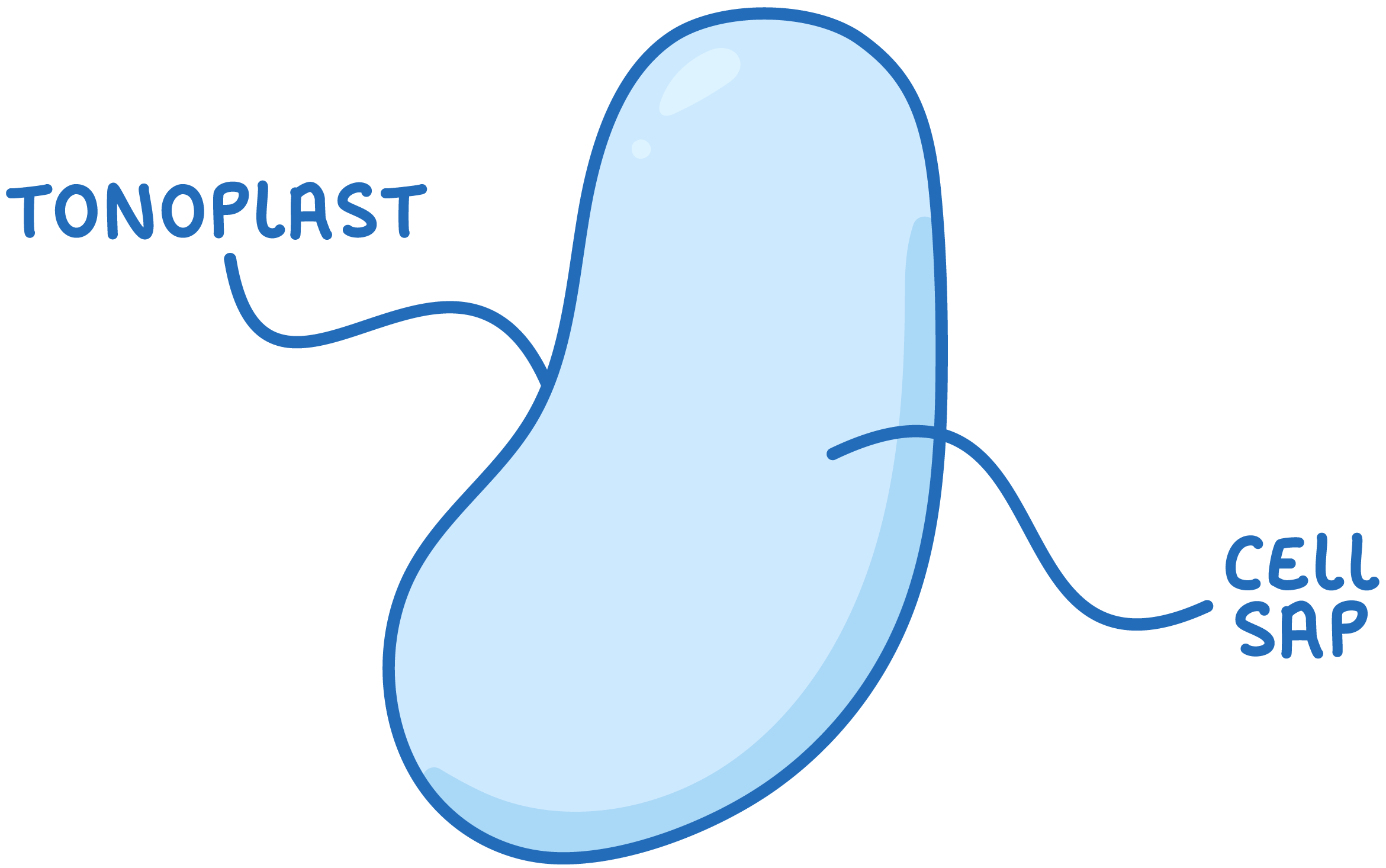Eukaryotic Cells: Plant, Algal & Fungal Cells
This lesson covers:
- The structure of plant cells
- The functions of their cell parts
- The structure of algal and fungal cells
Plant cells The diagram below shows all the organelles found in a typical plant cell. In this lesson, we'll explain the structure and function of cell walls, chloroplasts and vacuoles.  Plant cells contain the same parts as animal cells. However, they also contain additional organelles such as the cell wall, vacuole and chloroplasts. |
Cell wall The cell wall surrounds plant cells to provide a rigid structure.
 |
Structure:
Functions:
|
Chloroplasts Chloroplasts are found in the green parts of plants such as the leaves and stems.  |
Structure:
Function:
|
Vacuole Plant cells typically have a large central vacuole.  |
Structure:
Function:
|
Algal and fungal cells Algal and fungal cells can be unicellular or multicellular. |
Algal cells:
|
Fungal cells:
|